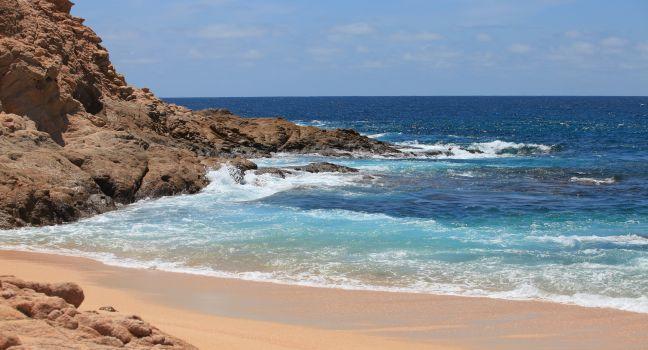Bahía Chileno

A calm enclave—with golf courses, residences, and Chileno Bay Resort—is roughly midway between San José and Cabo San Lucas. Consistently ranked one of the cleanest beaches in Mexico, Chileno has been awarded “Blue Flag” certification, meaning 32 criteria for safety, services, water quality, and other standards have been met. The beach skirts a small, crescent-shaped cove with aquamarine waters and an outside reef that are perfect for snorkeling and swimming (there are even restrooms, showers, and handicap access). To the east are tide pools great for exploring with the kids. Getting here is easy, thanks to the well-marked access ramps on both sides of the road. Along the western edge of Bahía Chileno, some 200 yards away, are some good-size boulders that you can scramble up. In winter this part of the Sea of Cortez gets chilly—refreshing for a dip, but most snorkelers don't spend too much time in the water. On weekends get to the bay early if you want to claim shade under a palapa.





